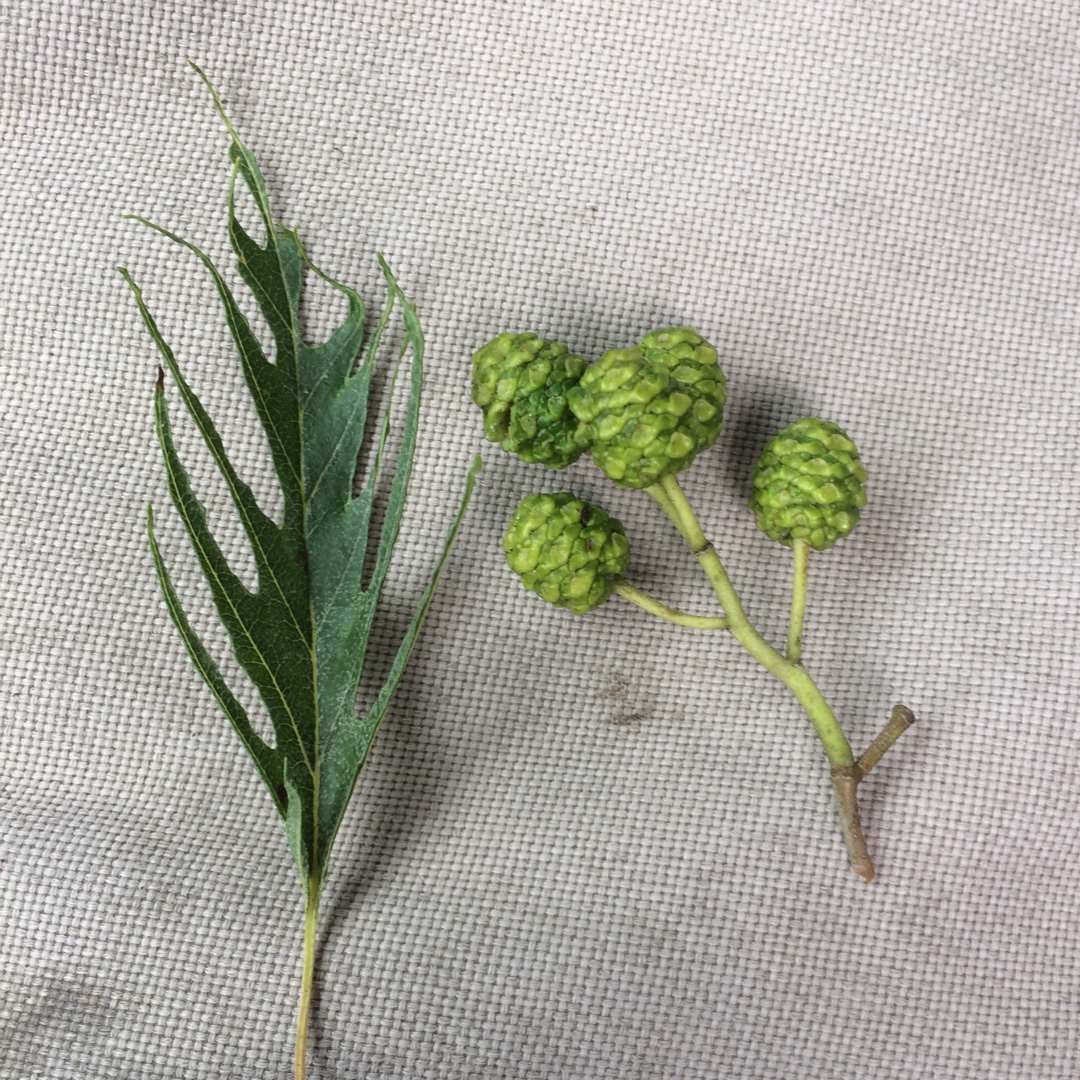
Alnus glutinosa' Imperialis'
Alder 'Imperialis'
The Alder tree is a deciduous tree, native to Europe. The tree is conical in shape, and mature trees can live to around 60 years. The bark is dark, fissured, and often covered in lichen. The light brown twigs turn red near the top, and are spotted. Young twigs are sticky to touch. The tree bears catkins, the male catkins are 2-6 cm long, and are yellow, and female catkins are green, oval, and are grouped in numbers of between 3 and 8 on each stalk. These are followed by small brown cone-like fruit - the female cones stay on the tree all year. 'Imperialis' is a slow-growing medium-sized tree with deeply pinnately lobed leaves, purplish male catkins, and small cone-like fruits.
Contributed by @emmalaws
-
Full sun to partial shade
-
Very little water
-
Full Frost Hardy: 5F (-15°C)
-
Moist and free draining
Common name
Alder 'Imperialis'
Latin name
Alnus glutinosa' Imperialis'
type
Deciduous trees or shrubs
family
Betulaceae
ph
5.0 - 7.5 Acid - Neutral
Plant & bloom calendar
-
Best time to plant
full grown dimensions
 12.00 M
20.00 M
12.00 M
20.00 M
Alnus glutinosa' Imperialis'
The Alder tree is a deciduous tree, native to Europe. The tree is conical in shape, and mature trees can live to around 60 years. The bark is dark, fissured, and often covered in lichen. The light brown twigs turn red near the top, and are spotted. Young twigs are sticky to touch. The tree bears catkins, the male catkins are 2-6 cm long, and are yellow, and female catkins are green, oval, and are grouped in numbers of between 3 and 8 on each stalk. These are followed by small brown cone-like fruit - the female cones stay on the tree all year. 'Imperialis' is a slow-growing medium-sized tree with deeply pinnately lobed leaves, purplish male catkins, and small cone-like fruits.
Planting
From Late Autumn TO Early Spring
Planting is best done between late autumn and early spring. Avoid planting in waterlogged (water sitting on the soil surface or pooled in the bottom of the hole) or frozen (too hard to get the spade in) soil. Container-grown plants can be planted any time of the year, but are easier to care for if planted in autumn or winter, as they need less watering than ones planted in spring or summer. Bare-root and rootballed trees and shrubs are only available in autumn and winter. They should be planted immediately, but if this is not possible, then they can be heeled in (temporary planting in the soil to prevent the roots drying out) until planting is possible. Dig a planting hole that is no deeper than the roots, but is ideally at least three times the diameter of the root system. If the sides of the planting hole are compacted, break the soil up with a fork before planting. Soak bare-rooted trees or shrubs for about 30 minutes prior to planting. And give containerised plants a good water before taking them out of their pots. Place the tree or shrub in the planting hole and position it so that the first flare of roots are level with the soil surface when planting is complete. With container grown plants, the top layers of compost may need to be scraped away to reveal the flare of roots. Deep planting prevents essential air movement to the root system and makes the lower trunk vulnerable to disease - this can lead to poor establishment. Refill the planting hole carefully, placing soil between and around all the roots to eliminate air pockets.








